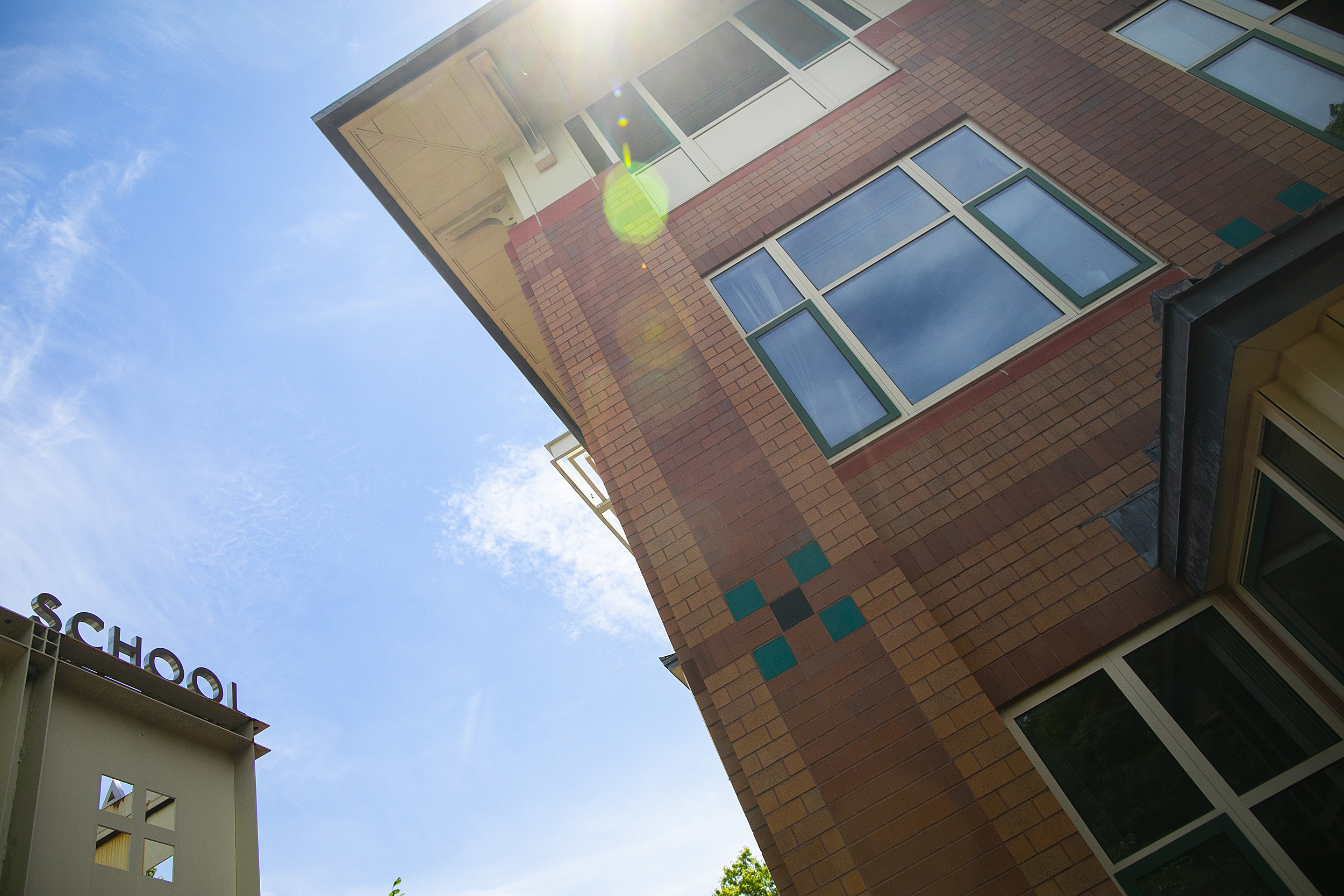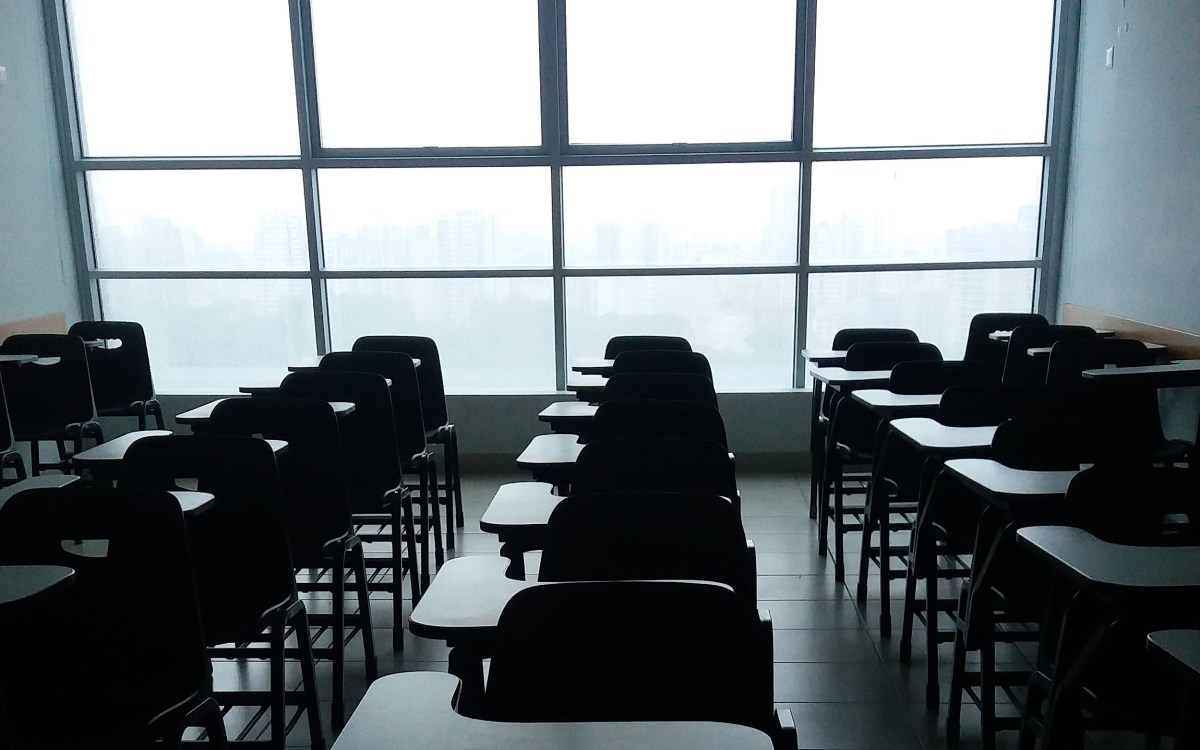
Photos by Stephanie Mitchell/Harvard Staff Photographer
Making American schools less segregated
Study suggests vast majority of parents favor integration, but many make choices for their children that make things worse
In recent decades American schools have been becoming more segregated. What can be done about it? A recent report by researchers at the Graduate School of Education (GSE) found that most parents support the idea of racially and economically integrated schools for their children, but parents who have a wider range of choice tend to make decisions that leave more segregated schools in their wake. Published by Making Caring Common, a project of the Ed School, the report was written by Ph.D. student Eric Torres and Richard Weissbourd, senior lecturer on education. The Gazette talked to Weissbourd and Torres about their report, and how parents and school districts could do more to help further school integration.
Q&A
Eric Torres and Richard Weissbourd
GAZETTE: You conducted a national survey of more than 2,500 American parents about school integration and found good news and bad news. What findings struck you most?
TORRES: The good news is that a lot of parents across different demographic groups are saying they want integrated schools for their children; they say they want integration in principle. But that obviously leads into some of the bad news, which is that they aren’t prioritizing integration in the values they look for in a school. While things like academic achievement or a school’s academic performance, safety, and enrichment activities tend to rank pretty high, the levels of integration of a school tend to be lower on their list of priorities.
WEISSBOURD: I was struck by the breadth of support for integration. It’s across demographic groups, political affiliation; it’s across Republicans and Democrats and across race and ethnicities. The breadth of the support was greater than I imagined, but the depth of the support was less than I imagined it would be. What is concerning to me is that people do want integration, but they rank it low compared to other factors, including enrichment activities, transportation, discipline, and a whole set of other things.
GAZETTE: Why do parents prioritize other factors rather than school integration?
WEISSBOURD: One of the things we want to emphasize is that these are very hard decisions. Most parents we talked to are well-meaning and really want to send their kids to integrated schools, but there are several things that get in the way. One is that sometimes in the district there are not good choices for them. Another thing that gets in the way is misinformation. White, advantaged parents hear about schools within their bubble, and that bubble may have misinformation. They tend not to talk to parents who are different from them. They sometimes rely on websites that have average scores on standardized tests, which are not good indicators of school quality. Parents also appear to be prone to different biases. For example, many white, advantaged parents appear to make a judgment about a school’s quality based on the number of other white, advantaged parents who are at that school. They’re reluctant to have their kids be a minority in the school, but somebody has to be a minority. This is a puzzle with lots of pieces, and what we’re trying to figure out is why, if parents say they want integration, schools are becoming more segregated.
Ph.D. student Eric Torres said parents often don’t prioritize integration when looking at schools for their children.

GAZETTE: Let’s talk about how segregated American schools are. What schools do most white students go to? What schools do most Black and Latino kids go to?
TORRES: We cite numbers in our report that are trying to depict school segregation in the country. It’s complicated, in part, because there are two ways of looking at it. One is that you can think about segregation in terms of how evenly distributed members of a given demographic group are in a district. Another way is to think about how isolated those students are. For example, if a district has 10 percent of low-income students, and all of the schools also have 10 percent of low-income students, you might think that it’s actually quite even and so it’s well-integrated. On the other hand, if you’re thinking in terms of isolation, you might say each of those individual schools only has 10 percent of low-income students and those students are quite isolated, and therefore, it’s highly segregated.
What we can say is that the average Black and Latino student in the United States attends a school in which 60 percent of the students are from low-income backgrounds. Forty percent of Black and Latino students attend hyper-segregated schools, with 90 to 100 percent of Black and Latino peers. White students, meanwhile, are more likely to be surrounded by white and affluent peers, and are the least likely to attend schools with children from other racial groups. This is the big picture, but there’s a ton of variation by districts and by regions, all of which is also affected by the changing demographics of the nation.
WEISSBOURD: There are many cities that are very segregated, with high percentages of Black and Latino students. That is common in urban areas, but in rural areas, there is a different trend. In rural areas, where there has been immigration, schools are becoming more integrated.
GAZETTE: Some people may still think that school integration benefits mostly Black and Latino kids and not white kids. Who benefits from school integration?
WEISSBOURD: This is a really important issue. Everybody benefits from integration, but integration is not just throwing kids together. We’re talking about thoughtful integration, where we pay attention to how we create an environment where everybody is respected and has dignity and where conversations about race are thoughtfully constructed. The evidence is that white kids in every income level of every demographic tend to benefit in many aspects of development from integration. They can benefit in terms of social emotional development; they can develop qualities like perspective-taking, gratitude, and empathy, which are very important for school success and work success. There are also ethical benefits for white kids in terms of having a deeper understanding of justice and a stronger commitment to justice. In our talks with parents, some said it was important for them to help their kids understand their privilege, and that’s one of the reasons they sent their kids to an economically integrated school. In other words, we’re not saying that white parents should do this as a service to other kids. That’s patronizing and not an accurate way to frame the issue. We’re saying that white parents should decide to send their kids to integrated schools because it’s good for both other kids and their own kids, because it’s vital to democracy and to the country as a whole.
TORRES: I would also add that many parents are really focused on the schools’ academic performance, and there’s good evidence that suggests that there’s no substantial harm to better-off students when schools achieve effective integration. And, of course, there are great benefits for, in particular, low-income students. White parents should think about integration in terms of the benefits it brings to their own children, and it shouldn’t be framed as a service to low-income and minority students because their own children are benefiting just as much as low-income and minority students.
Richard Weissbourd is a senior lecturer on education.

GAZETTE: Your report says that white, advantaged parents can play a role in closing the gap when it comes to school segregation. For parents who want to walk the talk, what steps do you suggest?
WEISSBOURD: We’re really making the case that white, advantaged parents can play a role but school districts can also do their part. We’re saying that white parents should do research and visit schools. There’s some evidence that when white parents actually visit schools they can change their minds. They should talk to people outside their bubble and spend some time doing self-reflection and thinking, “Do I have biases that are getting in the way here?” or “What’s the evidence that this school is lower quality than other schools?” They should also talk to people who have expertise: former teachers who know about the school system, informed school committee members, and diverse parents who have been in the system for a long time.
TORRES: Our national survey included people from all races and ethnicities, income levels and levels of education. But our focus groups and interviews focused more on white advantaged parents, in part because of historical and structural issues. We all know there is a consolidation of wealth and power among white, economically advantaged parents in this country. In many cases, they have the resources and the capacity to take action on integration and their choices affect its landscape. For example, white flight into the suburbs in the ’80s contributed to resegregation in some urban districts. The decisions of white parents, particularly when they are opting out, is something that requires attention.
GAZETTE: What’s your sense about the future of school integration?
WEISSBOURD: One of the messages we’re trying to get across is that we can’t be passive. If we let the forces out there just do their work, we’re going to see more segregation. But there are reasons to be optimistic. If those parents who really want integration take steps to research school choices, and if districts take the steps to educate parents and are proactive about lifting up the strengths of diverse schools and work toward thoughtful integration, you may see more parents sending their kids to integrated schools. There are concrete steps for both the parents and districts that can really improve the state of things. We’re saying that if we’re passive, we’re going to see things get worse, but there are some very doable actions that can make things better.
TORRES: In some ways, our survey makes me optimistic because I believe the signal we’re getting from this data is that school integration is something people want in principle. I’m hopeful that, as districts hear that, and as parents are encouraged to make choices that support integration, it’s possible to take steps to see a more integrated country. On the other hand, there are real challenges such as residential segregation, income disparities, and structural features that make this a difficult problem. In our interviews with parents, I was pleasantly surprised when I heard some people with deeply conservative views who had similar thoughts as many of the liberal people we talked to; both groups had a great desire for integration, and when they reflected on its benefits, both sounded pretty similar. I’m generalizing, but hearing that, in addition to what we saw in the survey, gave me both hope and pause. It gave me pause because of how often we tend to think about this and so many other issues as being strictly partisan and polarized, and it didn’t always come out that way.
This interview was condensed and edited for clarity and length.







